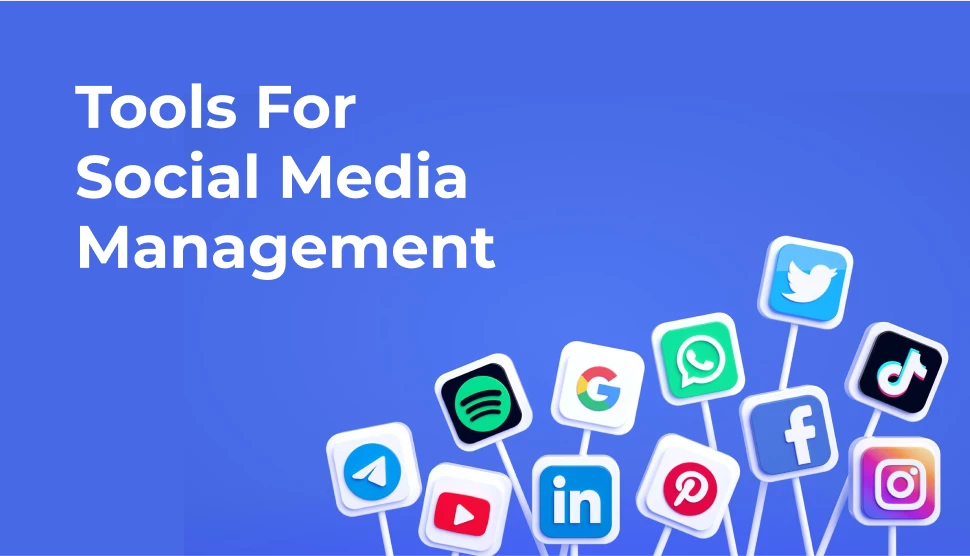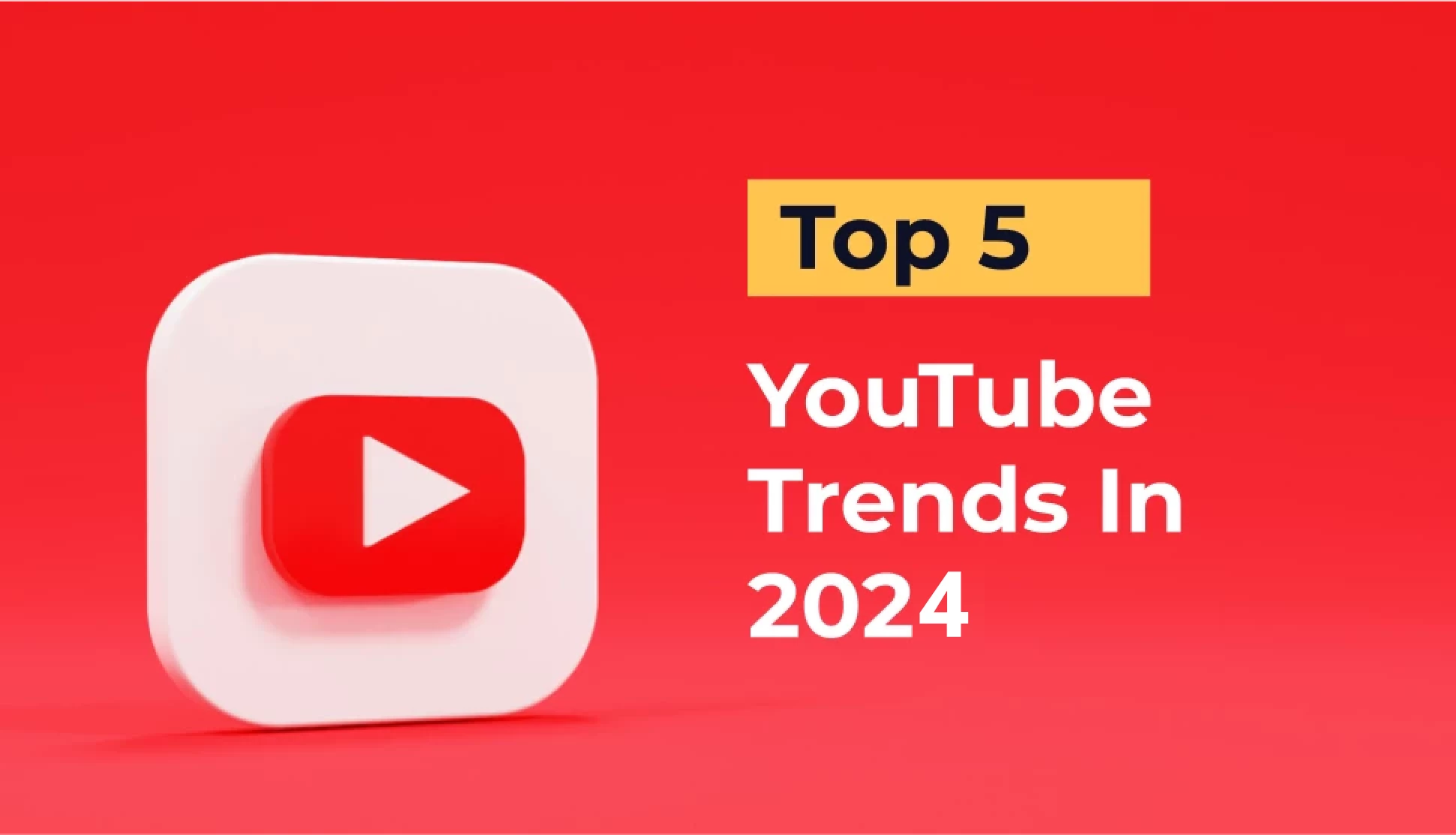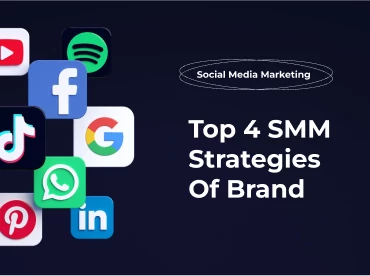What is Social Media Listening: A Complete Guide
4 mins | Jul 26, 2023
Do you consider yourself a good listener? We all know how important it is to listen and communicate clearly in our personal lives. But have you ever thought about listening to your brand's audience?
These days, thanks to social media, people are more open and transparent about their conversations than ever before.
You can analyze whether your product is being praised or criticized; you can also discover the topics and trends they're passionate about, find ways to outshine your competitors, understand their problems, and determine which marketing messages resonate with them.
But as a business owner and brand owner, just ask yourself, Are you listening to what the audience is talking about? Or do you want to know how to analyze your customers?
Well, I have a perfect answer! It's time to unlock the power of social media listening and gain a deeper understanding of your customers.
But you might have a question about what is Social listening, why it is important, and how to apply it to study social media analytics. Then hold tight. I will explain every question about social listening in this blog.
What is Social Media Listening?
It involves actively observing and analyzing conversations, mentions, and trends of your business or brand across various social media platforms. It goes beyond simply online brand monitoring, which involves monitoring the wider social landscape to gain valuable social media insights into consumer preferences, trends, and sentiments.
It helps to understand online conversations and customer sentiment. It empowers businesses to make informed decisions, manage brand reputation, engage effectively with customers, analyze competition, identify influencers, and drive product development and innovation. It is an invaluable tool for building strong customer relationships, staying competitive, and achieving long-term success in the digital age.
Further Reading: Content Marketing The Ultimate Guide
Here are a few ways in which customer sentiment analysis can be done:
- By studying Customer Insights
- By maintaining Brand Reputation
- By Studying Competitive Analysis
- By leveraging Influencer and Brand Advocacy
- By Monitoring Product Reviews and ratings
- Deploying a chatbot to collect customer data
2. Why does Social Media Listening Matter?
Social media has revolutionized the way customers perceive brands. It has become a powerful platform where customers express their opinions and share experiences.
The impact of social media on brand reputation and customer perception cannot be ignored. Positive interactions, engaging content, and responsive customer service can enhance a brand's reputation and create a favourable perception among customers.
Conversely, negative feedback, unresolved issues, or insensitive content can quickly damage a brand's reputation and negatively influence customer perception.
Therefore, businesses must prioritize their social media presence, actively engage with customers, and address concerns promptly to build a strong brand reputation and shape a positive customer perception.
To strengthen your brand's social media presence, social listening is a game-changing marketing tool that can elevate your brand to new levels of success.
Let's explore its potential benefits:
- Customer Feedback Analysis:
By tracking mentions on social media, you can provide quick responses and prioritize customer support, showing potential customers that you value their needs.
- Brand Reputation Management:
Analyzing likes, comments, hashtags, and subtweets helps you understand how your brand is perceived, allowing you to set benchmarks for reputation management.
- Product Performance Analysis:
Monitor social media engagement around your products to gain insights into the customer experience and make improvements.
- Track and Measure Marketing Efforts:
Analyze campaign performance, fine-tune strategies, and ensure they align with your objectives.
- Increase Customer Engagement:
Identify relevant conversations, join discussions, and foster genuine engagement to boost brand awareness.
- Access Customer Insights:
Understand your customers' thoughts, preferences, and behaviours to personalize your offerings and improve customer experiences.
- Improved Social Media Strategies:
Use social media data to create better content, optimize ads, and identify influential voices to collaborate with for influencer marketing.
- Identify Influencers:
Discover influential voices in your industry and leverage their credibility to expand your brand reach.
- Prepare Tailored Content:
Gain valuable insights into your audience's interests and create compelling content that resonates with them.
- Measure Organic Search Value:
Evaluate the impact of your SEO strategies by tracking relevant keywords, conversations, and social media engagement metrics.
Further Reading: Digital Marketing VS Content Marketing
3. Key Steps to Effective Social Media Listening
Social listening is not just an optional practice; it is essential for businesses seeking to understand and connect with their target audience.
By actively listening to what people say about your brand on social media, you can gain valuable insights and take informed actions to enhance your marketing efforts.
Here are the key steps to ensure effective social listening:
- Set up monitoring tools and platforms:
Choose tools like Hootsuite or Sprout Social to track what people say about your brand on social media. For example, if you run a coffee shop called "BrewBuddies," use these tools to monitor mentions of "BrewBuddies" or hashtags like #coffeeaddict.
- Define goals and objectives:
Decide what you want to achieve through social listening. For instance, your goal could be understanding customer feedback or staying updated on industry trends.
- Identify relevant keywords and topics:
Determine the words or topics you want to monitor related to your business. If you own a fitness apparel brand, key terms like "activewear," "workout gear," or "fitness fashion" would be relevant.
- Select social media channels:
Focus on the platforms where your target audience is most active. Platforms like Instagram or LinkedIn might be suitable if you're targeting young professionals.
- Create a systematic approach:
Develop a process to collect and analyze data. For instance, categorize conversations as positive, negative, or neutral. Analyze patterns to identify customer preferences or popular trends.
4. Leveraging Social Media Listening for Business Insights
As we all know, social media has become a goldmine of information in today's digital age. It offers businesses a vast opportunity to gain insights and enhance their marketing efforts through social listening.
By actively listening to social media, businesses can unlock valuable data and reap numerous benefits. Let's delve into how it helps:
- Understand customers:
Businesses gain insights into their preferences and behaviours by listening to what customers say on social media. It helps in creating personalized experiences and meeting customer needs.
For example, a cosmetic brand can use social listening to identify popular beauty trends among its target audience.
- Identify trends and opportunities:
Monitoring conversations and influencers on social media helps businesses stay updated on emerging trends and market opportunities.
For instance, a fashion retailer can use social listening to track discussions on sustainable fashion and make informed decisions.
- Monitor competitors:
Social listening enables businesses to monitor competitors and industry developments. It helps in refining strategies and gaining a competitive edge.
For example, an electronics manufacturer can monitor customer feedback on rival products and capitalize on competitors' weaknesses.
- Engage with customers:
Social listening allows businesses to engage with their audience and build strong relationships. Businesses can enhance customer satisfaction and brand loyalty by responding to queries, addressing concerns, and acknowledging feedback.
For instance, a telecommunications company can use social listening to address network coverage issues.
By leveraging social listening, businesses can make informed decisions and drive success in the digital landscape.
Further Reading: Top 11 AI Tools for Video Editing
5. Tools and Techniques for Social Media Listening
Social media has become a powerful tool for businesses to connect with their audience. Social listening involves watching conversations and interactions across different social media platforms.
Let's dive into these tools and techniques to maximize the benefits of social listening for your business.
Popular social media listening tools:
- Brandwatch:
This tool offers real-time online brand monitoring, sentiment analysis, and competitive intelligence to track brand mentions and customer sentiment.
- Hootsuite:
Businesses can use Hootsuite to monitor multiple social media platforms from one place, gaining insights into brand mentions, industry trends, and audience engagement.
- Sprout Social:
features like keyword monitoring and sentiment analysis, it helps businesses effectively monitor and engage with their audience.
- Sentiment analysis and sentiment tracking:
Using sentiment analysis tools, businesses can understand customers' overall feelings and emotions towards their brand. These tools analyze social media posts using language processing and machine learning, categorizing them as positive, negative, or neutral. Tracking sentiment over time allows businesses to measure the impact of their marketing efforts and find areas for improvement.
- Hashtag tracking and analysis:
Hashtags are important in social media conversations. Businesses gain insights into popular topics, trends, and customer opinions by monitoring and analyzing relevant hashtags. Hashtag tracking tools provide information on reach, engagement, and user demographics, helping businesses customize their content and campaigns for specific audiences.
- Social media monitoring for crisis management:
Monitoring social media is crucial for effective crisis management during a crisis or negative event. Tools like Mention and Talkwalker enable businesses to track and respond to real-time mentions, address customer concerns, manage reputation, and provide timely updates. Monitoring social media during crises helps businesses be proactive and maintain trust with their audience.
Using these tools and techniques, businesses can optimize their strategies, enhance brand reputation, and build strong relationships with their audience.
So, as a Brand/Business, embracing these tools and techniques is essential for staying competitive and successful in the ever-changing world of social media marketing.
Further Reading: Top 10 AI Tools for Writing
6. Case Studies and Examples
When it comes to social listening, Netflix sets the gold standard. Their social media marketers are exceptional, as evidenced by their growing following. Just on Twitter, Netflix boasts an impressive 21.8 million followers. That's massive!
They know key target audience factors: millennials; used to having friends that exist only online; crave attention; do research before purchasing; value peers’ opinions more than movie stars; live for humor, self-irony, and sarcasm.
Netflix’s social media marketing team keeps all that in mind – they post hilarious tweets, re-tweet users' opinions with only a few followers, and work with relevant influencers.
By actively listening to their audience, Netflix uncovered a fascinating insight: many viewers were dozing off while binge-watching their shows. While most brands would overlook this as a trivial issue, Netflix seized the opportunity to showcase its attentiveness, care, and unparalleled creativity.
To address this, they introduced Netflix Socks – intelligent socks that detect when the wearer falls asleep, sending a signal to pause the show on their TV. This innovative solution ensures that viewers no longer wake up to spoilers and confusion.
The product received enthusiastic praise, gained viral attention, garnered extensive media coverage, and even earned a prestigious Shorty Award for its ingenious use of technology.
Now isn’t that something to learn from?
7. Best Practices for Effective Social Media Listening
In the fast-paced world of social media marketing, businesses need to listen effectively to their audience and stay ahead of the competition. Here we'll explore some best practices for successful social listening that can help businesses build strong relationships with their customers and drive growth.
Developing a proactive listening strategy:
- Define your goals:
Start by determining what you want to achieve through social listening. Identify the areas you want to focus on, such as managing your brand's reputation, understanding customer sentiment, or conducting market research.
- Find the right channels:
Discover where your target audience is most active and engage with them effectively. It could include popular platforms like Facebook, Instagram, Twitter, or industry-specific forums and communities.
- Use Online Brand monitoring tools:
Take advantage of social listening tools to keep track of conversations, brand mentions, and industry keywords. These tools can provide valuable insights and help you stay updated on real-time trends.
Monitoring relevant metrics and KPIs:
- Choose meaningful metrics:
Identify the key performance indicators (KPIs) that align with your social listening goals. These metrics could include engagement rate, sentiment analysis, reach, conversion rate, or customer satisfaction.
- Analyze data consistently:
Regularly review and analyze the data you collect to gain insights into customer preferences, pain points, and overall sentiment. Use these insights to refine your marketing strategies and improve the customer experience.
Engaging with customers and responding to feedback:
- Foster two-way communication:
Actively engage with your audience by responding to comments, messages, and mentions. Encourage conversations, ask questions, and seek feedback to build meaningful connections.
- Address customer concerns:
Respond promptly to customer queries, complaints, and feedback. Show empathy, provide helpful solutions, and demonstrate your commitment to excellent customer service.
- Show appreciation:
Acknowledge positive feedback and expressions of satisfaction from your customers. It helps build brand loyalty and encourages repeat business.
Continuous improvement and adapting to changing trends:
- Stay informed about industry trends:
Keep an eye on emerging trends, new platforms, and changes in consumer behaviour. Adapt your social listening strategy to stay aligned with the evolving landscape.
- Learn from competitors:
Monitor your competitors' social media activities and learn from their successes and failures. Identify areas where you can improve and differentiate yourself in the market.
- Seek internal feedback:
Regularly communicate and collaborate with your marketing and customer service teams to gather insights and align your social listening efforts with your overall business objectives.
By developing these practices, businesses can gain valuable insights, build stronger customer relationships, and drive success. Remember, social listening is an ongoing process, and continuous improvement is vital for remaining competitive in the ever-changing digital landscape.
Further Reading: Top 7 AI Tools for SEO
8. Future Trends in Social Media Listening
Social listening is changing as technology advances and people's behaviour on social media platforms changes. The future of social listening looks bright because of new technologies and advanced analytics. These developments have the potential to greatly improve how businesses connect with their audience and stay up-to-date on the latest trends.
Emerging technologies like artificial intelligence (AI) and machine learning will significantly impact social listening. They can process vast amounts of data quickly and accurately, identifying patterns, sentiments, and trends. AI-powered tools automate data collection, sentiment analysis, and trend identification, providing real-time insights for informed decision-making.
With AI and machine learning, businesses can uncover deeper consumer insights and detect emerging trend analyses in social media that may be missed through manual analysis.
Predictive analytics is another future trend that enhances social listening. Businesses can predict future trends, preferences, and market shifts by analyzing historical data and customer behaviours. This proactive approach allows businesses to adjust their strategies ahead of the competition. Predictive analytics enables businesses to identify potential issues, opportunities, and customer needs in advance, proactively meeting expectations and driving growth.
All I can say is embracing these trends gives businesses a competitive edge and long-term marketing success.
9. Conclusion
Social listening plays a vital role in today's digital landscape, enabling businesses to effectively connect with their audience and succeed in their marketing efforts.
In conclusion, social listening is not just a buzzword; it is a fundamental practice for businesses aiming to thrive in today's digital age.
By actively listening, analyzing data, and taking action based on insights, businesses can build stronger customer relationships, drive engagement, and ultimately achieve their marketing goals.
Incorporating social listening into your overall marketing strategy is essential for staying competitive and successful in the dynamic world of social media.
Author







